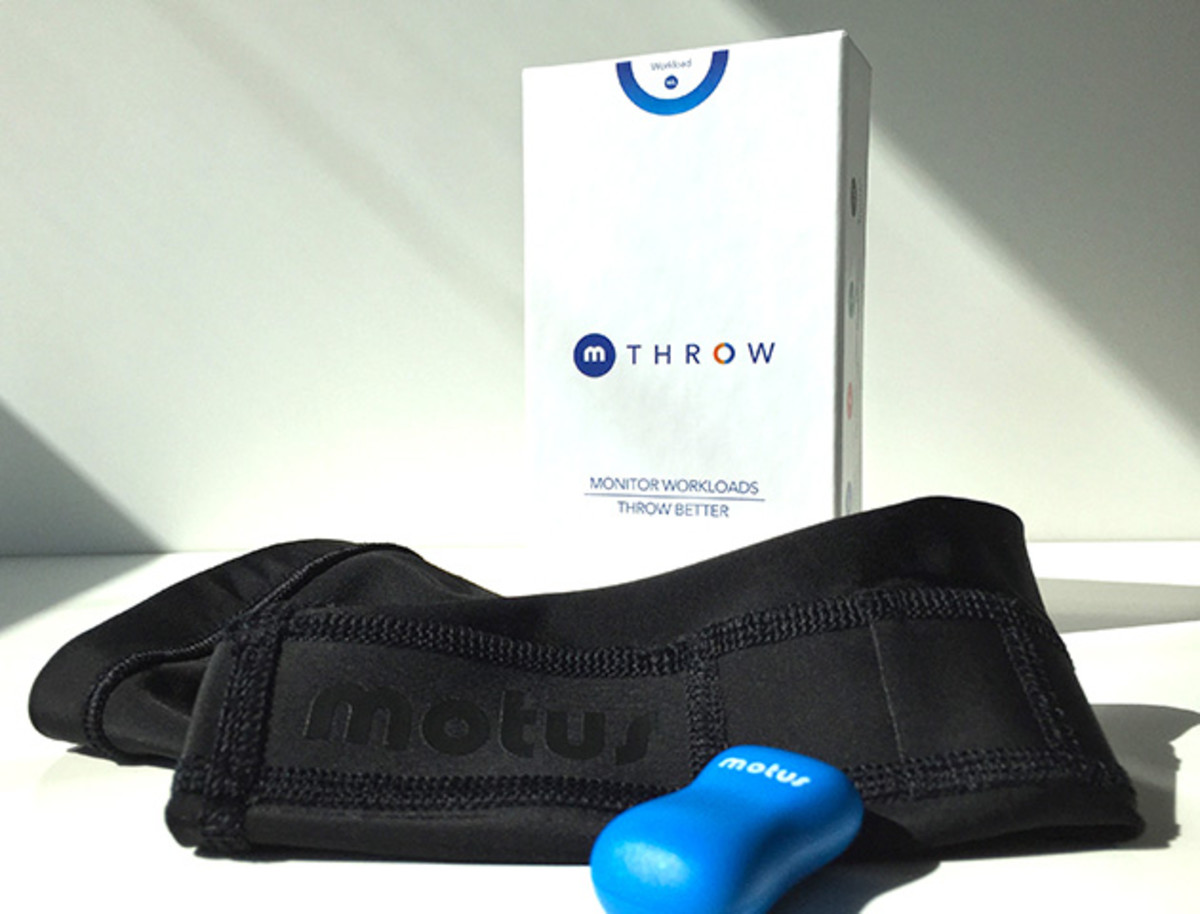Tech Talk: MLB pitchers using mThrow sleeve to monitor UCL workload

Tommy John made the ulnar collateral ligament famous. Motus Global has debuted its mThrow sleeve to help pitchers keep Tommy John and the surgery named after him out of their vocabulary.
What is it and how does it work?
The mThrow sleeve tracks not just movement, but the workload on a players’ UCL, the ligament responsible for elbow stability. Embedding a 3D chip that uses six sensors—two sensors to monitor movement in three different directions—into a Lycra-based compression sleeve allows mThrow to monitor the force placed on the UCL and the work that ligament does.
“We wanted to get a number to put to that,” Ben Hansen, product lead on mThrow, tells SI.com. “All we had was a pitch count. Now we have an automated way to (track) the stress of every throw they make.”
Using a workload algorithm modeled after the properties of the elastic UCL, the mThrow sends metrics to players and coaches through an app via Bluetooth. With the sleeve worn on the inside of the throwing forearm, the sensor positions directly over the UCL, offering data based on actual UCL use.
Why’s it significant?
While the majority of wearable tech monitors object movement, whether a person or a ball, the mThrow allows it to measure torque and stress on the underlying biomechanics.
Pitch counts aren’t entirely accurate in monitoring UCL usage. As Hansen points out, a rubber band can stretch at half stress 1,000 times without breaking, while it may stretch to maximum capacity only 100 times before snapping. The UCL mimics a rubber band.
“This gives us some really cool insights,” he says. “With how much you fatigue, you can start to see when the elbow is dropping and the arm slot varies. It gives early warning signs you can’t see with your eye. It is really hard to see an arm slot degree change here and there. This is better insight for decisions on data they can’t see.”
Why your spring baseball training should include this program
What are the implications in the world of baseball?
From a high school athlete right up to some of the top arms in MLB, having more insight into the stress placed on the UCL is simply data that wasn’t available before. And using the app, pitchers can monitor individual workload histories to see when the stress levels rise too high.
When it comes time to recover from injury, mThrow can help give pitchers a real-life view of their improvement. Wearing mThrow before the injury offers a baseline for when they do get hurt. On the way back from injury, when pitchers may need to train at 50% of that baseline, for example, the historical data allows them to monitor stress within a protocol, Hansen says.
What are the downsides?
Motus Global has a history in MLB with in-lab biomechanics work, but the mThrow offers a new device. As with anything fresh, early adoption can take a slight learning curve to understand how best to use it. There will also always be some slight push back from players or coaches who feel there is too much data out there to accurately differentiate what proves valuable. Unlike big labs, though, the sleeve has metrics that prove easier to understand.

Who’s using it already?
MLB has it all over Spring Training and Hansen hopes MLB approves it for in-game use during the regular season any week now. During the original prototype runs that started last fall, nine MLB teams had their players wearing it. mThrow had 25 organizations sing up for Spring Training use. And while shortstops, second baseman, catchers and anyone in a position with high throwing volume have started using mThrow, the tool was primarily designed for pitchers.
Hansen says that every MLB organization is different and he works with staff anywhere from high-level front office personnel to player development staff, scouts, athletic trainers, pitching coaches and the athletes themselves.
“All teams approach this problem in different ways,” he says. In the end, though, everyone wants to manage injury risk.
What’s the future of it going forward?
Assuming MLB allows the mThrow device in regular season games, we could see a slightly diminished reliance on pitch count, at least internally within organizations.
“Pitchers have reached out to us individually,” Hansen says. “They want a tool to stay healthier longer and [extend] their careers.”
Tim Newcomb covers stadiums, design and gear for Sports Illustrated. Follow him on Twitter at @tdnewcomb.
